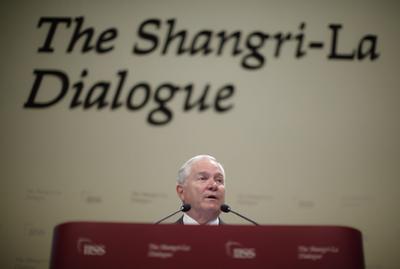The announcement comes amid China’s rapid military modernisation — including a refurbished aircraft carrier — and its recent clashes with Vietnam and the Philippines in the South China Sea. In Gates’ words, it is part of the US effort to maintain a ‘robust presence’ across the Asia Pacific.
The LCS is not intended to be a ‘combat warship’. According to Congressional Research Service analyst Ronald O’Rourke, the ships are expected to operate in the least-severe environment, and not to ‘fight hurt’. Its primary missions are antisubmarine warfare, mine countermeasures and surface warfare against small boats. Additional packages could be installed for the LCS to perform intelligence, surveillance and reconnaissance operations.
The deployment fulfils a number of US objectives. First, it symbolises the role of security guarantor played by the US to smaller regional powers in the ‘hub and spoke’ system of bilateral security alliances. Since the late 1990s, the US has moved aggressively to revive security relationships with Southeast Asian allies. After the Mischief Reef incidents of 1995 and 1998, US–Philippines security cooperation was increased. In 1999, US–Philippines military contact was resumed following the conclusion of the Visiting Forces Agreement that year. In July 1999, the USS Blue Ridge, command ship of the US Seventh Fleet, visited Manila. In February 2000, the two countries held their first large-scale joint naval exercise since 1993.
Such actions received new impetus following the 9/11 terrorist attacks, with Southeast Asia identified as the ‘second front’ in the war on terror and targeted for deepening military ties. The latest episode of disputes may yet drive another round of enhancements to security relationships. In the recent China–Philippines dispute, Secretary of State Hillary Clinton urged both sides to exercise restraint, but also underscored US commitment to the defence of the Philippines. The US has also announced it is ready to provide hardware to modernise the Filipino military.
China’s assertiveness is also pushing old enemies Vietnam and the US closer together. The Financial Times reported that Vietnam is considering the re-opening of the strategic Cam Ranh Bay harbour to foreign navies, including the US, to counter China’s assertiveness.
Given the antisubmarine and surveillance focus of the LCS, the deployment also signals increased operational interest on behalf of the US in monitoring the growing Chinese presence. This should draw concerns from the region because past intelligence and surveillance activities of US warships and aircraft have led to severe strains in Sino–US relations. Since the mid-air collision between a US EP-3 reconnaissance plane and a Chinese fighter jet in April 2001, there have been a series of clashes. In September 2002, Chinese vessels and aircraft harassed USNS Bowditch in the Yellow Sea. In March 2009, provocative encounters occurred again between Chinese vessels and the USNS Victorious and Impeccable in the South China Sea.
US naval presence and intelligence gathering activities are likely to increase in the foreseeable future. At a time when the projection power of the Chinese navy is expanding, the South China Sea will become more crowded strategically. This will generate more frequent clashes and tensions, producing escalatory actions and counter actions. The situation is made worse by the fact that the US is among a small minority of nations yet to ratify the UN Convention on the Law of the Sea. Furthermore, China and the US are interpreting the convention to their own advantage, regarding whether hydrographic and military surveys require consent of the coastal state.
While the US has little legitimacy regarding navigational issues and the Convention, China’s and other competing claimants’ arguments are equally weak, as shown by their violations of the 2002 Declaration on Conduct of Parties in the South China Sea (DOC). In one March-incident, two Chinese patrol boats threatened to ram a Philippine seismic survey ship operating near the disputed Spratly Islands. In another incident in May, a Vietnamese exploration vessel, operating in disputed waters, had its cables cut by a Chinese patrol boat.
The region seems to be embroiled in a three-way security dilemma. Chinese assertiveness has pushed ASEAN states to strengthen their military capabilities and invite US presence as part of a balance of power tactic; but increased US presence could in turn lead to more frequent clashes with China. Rather than introducing stability, they are inviting more chaos. It is almost ten years since the DOC was agreed, but the region still fails to respect its purpose, not to mention making it into a binding code of conduct. The hope is that US involvement will deter China and lead to more stability, but any stability will be short lived unless all parties build a security mechanism focused on reducing the likelihood of miscalculation and misunderstanding.
Andy Yee is a writer and translator based in Hong Kong. Educated at the School of Oriental and African Studies and Cambridge University, he has worked at the Political Section of the EU Delegation to China in Beijing. He blogs at Global Voices Online and China Geeks.


US is still discussing the possibility of deployment its LCS to Changi in Singapore. Such littoral combat ship will be a real threat to Chinese coast. The conflict in the south China sea has escalated the tension in the region. Philippine also has get jet fighters from S.Korea as a result of the maritime conflict.